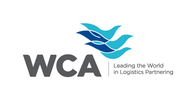

CB3u—Intro to U.S. Customs Brokerage, Part 3: Cargo Release Processing; Surety Bonds
Subscriber price: $189.00, Non-subscriber price: $235.00
Estimated total study time: 13 hours 32 minutes
![]()
This the third of the nine-part series of introductory courses in the practical work of U.S. customs brokerage work groups, and should be taken after completion of the prior 2 courses for proper continuity:
- CB1u—Intro to U.S. Customs Brokerage: Part 1, The Players, Functions and Business of a Customs Broker
- CB2u—Intro to U.S. Customs Brokerage: Part 2, Customs Broker Transactions, Supervision and Work Flow
This course begins with transportation information required for a customs release. Next we address entry and non-entry types and conclude with importer and surety bond information.
Note: Part 9 of this introductory course series covers the actual processing of a customs entry.
Customs Entry and Release Overview
This lesson begins with an entry process overview and progresses through the steps a broker typically takes in order to set up a customs clearance transaction (the "file initiation process" covered in Part 2 of this series of customs broker courses). It concludes with the type of importer information necessary and how to obtain it, including standing instructions from the importer.
(Estimated study time: 41 minutes)
- Introduction
- Customs Entry and Release Overview
- Review of Broker File Initiation Process and Information
- Standing Importer Information and Instructions/SOPs
Customs Entry Information; Importer of Record and Customs Bonds
This lesson provides an in-depth exploration of the CBP Importer of Record Information, also known as CBP Form 5106 data. It is designed for customs brokers, importers, and anyone involved in the customs entry process. The lesson covers the essential aspects of gathering, maintaining, and updating importer information to ensure compliance with U.S. Customs and Border Protection (CBP) regulations. Participants will learn about the importance of accurate importer information and how it is used within the Automated Broker Interface (ABI) system. The lesson will guide you through the process of submitting CBP Form 5106, both electronically and via paper, and highlight common errors to avoid. You will also gain insights into managing Importer Record Numbers (IRNs) and suffix codes, which are crucial for tracking and maintaining importer records. Additionally, the lesson addresses advanced uses of CBP Form 5106 data, special cases, and the role of customs brokers in managing importer information. By the end of this lesson, participants will have a comprehensive understanding of how to effectively handle importer information, ensuring smooth and compliant customs entry processes.
(Estimated study time: 1 hour 8 minutes)
- Introduction
- CBP Importer of Record Information (CBP Form 5106 Data)
- Customs Bond Information
Creating the Manufacturers Identification (MID) Code
This lesson provides a comprehensive overview of the Manufacturer Identification Code (MID), a crucial element in the customs entry process. The MID is derived from the name and address on commercial invoices and is required for each entry release and entry summary in the Automated Commercial Environment (ACE). This unique code is essential for the enforcement and perpetual monitoring of certain commodities. Participants will learn about the historical context and evolution of the MID, from the unsuccessful use of telex numbers to the current "keylining" technique. The lesson will cover the rules for constructing the MID, its various uses, and the scenarios in which it is required. Additionally, the lesson will explore the role of the MID in different contexts, such as antidumping and countervailing duty cases, Customs Trade Partnership Against Terrorism (CTPAT), dangerous goods, and more. By the end of this lesson, participants will have a thorough understanding of how to create and use the MID, ensuring compliance with CBP regulations and facilitating smooth customs entry processes.
(Estimated study time: 1 hour 5 minutes)
- Introduction to the Manufacturer Identification Code
- Manufacturer Identification Code (MID) Uses
- Automated Commercial Environment (ACE) MID Application
- Type of MID for Antidumping and Countervailing Duty Cases
- Active MID Requirement for CTPAT
- A Different Type of MID is Required for Dangerous Goods
- ELVIS and eCert Require a MID
- MID Requirement for HTSUS Chapter 98
- MID's for Importer Security Filing
- Information Required in Ruling Requests
- Actual MIDs for Textile & Apparel
- Creating the Manufacturer's Identification (MID) Code
Common Errors and Penalty Situations for Incorrect Manufacturer Identification (MID) Codes
This lesson focuses on the common errors and penalty situations associated with the Manufacturer Identification Code (MID) in the customs entry process. Participants will learn about the potential consequences of improperly constructed MIDs, including entry rejects and penalties imposed by the Centers of Excellence and Expertise (Centers). The lesson will cover specific scenarios where errors commonly occur, such as issues with textile and apparel products, and provide guidance on how to avoid these mistakes. Additionally, the lesson will explore the rules for constructing MIDs for manufacturers in various countries, highlighting common pitfalls and best practices. By understanding these rules and the importance of accurate MID construction, participants will be better equipped to ensure compliance and avoid penalties.
(Estimated study time: 50 minutes)
- Introduction
- Common Errors and Penalty Situations
- Entry Rejects and Penalties Applicable to Issues with Manufacturers ID
- Manufacturer ID Rules for Specific Countries
- Manufacturers in the United States
- Manufacturers in Canada
- Manufacturers in China, Hong Kong and Macau
- Manufacturers in Germany and Italy
- Manufacturers in Great Britain
- Manufacturers in Indonesia, Portugal, and Russia
- Manufacturers in Monaco, Singapore, Vatican City
- Other Frequent Country Code Errors
- Manufacturer ID Rules for Cities
- Mis-Spelling and Errors Due to Language
- Other Frequent City Code Errors
Transportation Information Required for Customs Broker ABI Processing
This lesson, begins with an explanation of the customs manifest and chain of custody requirements. Then it describes how transportation information is transmitted electronically to CBP to receive a Customs release.
(Estimated study time: 58 minutes)
- Introduction
- Customs Manifest and Chain-of-Custody Requirements
- Customs Entry (ABI Record) Transportation Information Must Match Customs Manifest
- ABI Record Transportation Data — General
- Goods to be Cleared at First Place of Arrival in the U.S.
- Goods to be Cleared after Transportation In-Bond from Arrival Port to Another Customs Port
- Goods to be Cleared from a General Order Warehouse
- Goods to be Cleared from a Foreign Trade Zone
Transportation Information Required for Direct Customs Release
This lesson concentrates on recognizing shipments that can be released directly by CBP without a Customs Broker. Here we will cover low value shipments, imports of business records and data, goods imported for personal use, and specialized handling of transportation equipment and reusable packing.
(Estimated study time: 54 minutes)
- Introduction
- Customs Release under Section 321 or Entry Type 86
- Section 321 Non-Entry
- Section 321 Not Allowed
- De Minimis Rules
- Section 321 under Entry Type 86 for Low-Valued Shipment
- Customs Release under HTSUS General Note 3e
- Customs Release under Instruments of International Traffic (IIT)
- Container Arrival in U.S. Filled or Empty
- Container Arrival in the U.S. Empty with Residue
- Other Packaging Material that May Be Considered an Instrument of International Traffic
- Customs Release of Personal Goods
Information Requirements by Air and Ocean
Different information is necessary depending on whether the goods arrive by air, ocean, rail or truck. These systems can all file their manifest information electronically. This lesson covers the carrier's requirements with respect to cargo and how to obtain the information for air and ocean shipments if it has not been received.
(Estimated study time: 1 hour 11 minutes)
- Obtaining Needed Transportation Information in General
- Obtaining Shipment Arrival Notification
- Obtaining Transport Information for Goods Arriving by Air Carrier
- Obtaining Transport Information for Goods Arriving by Ocean Vessel
Information Requirements for Truck (PAPS)
Release at a land border is very different from release at a port that handles air or ocean imports. Shipments from other countries have can be more complex, but even imports from Canada and Mexico have idiosyncrasies. In this lesson we discuss the information required for processing the release of truck shipments arriving at the border, players and information required for PAPS to function, and the relationship between PAPS, FAST and NCAP.
(Estimated study time: 51 minutes)
- Introduction
- Facilitating Border Traffic: PAPS and FAST
- PAPS in General
- Players and Information Required for PAPS to Function
More on PAPS
This lesson will continue our discussion on PAPS. It covers the sequence of events for processing e-manifests at ACE enabled ports. Then we will move on to the relationship of PAPS with other government agencies and security aspects of the program.
(Estimated study time: 1 hour 9 minutes)
- Introduction
- PAPS Process Sequence
- How PAPS Operates
- Shipments Arriving at ACE-enabled Ports
- Shipments Arriving at Non-ACE Ports
- Relationship of PAPS to Other Government Agency Import Controls/Processing
- PAPS and CBP "Selectivity" and Security "Targeting"
FAST; the BRASS/Line Release Replacement
Even more secure than PAPS, but beneficial to the trade are FAST and NCAP. NCAP operates like PAPS, but has special rules when used in conjunction with FAST. We will discuss the operation and benefits of these programs.
(Estimated study time: 42 minutes)
- Introduction
- The FAST Program
- FAST Operation and Benefits
- Eligibility to Use FAST
Non-PAPS Imports; Intransit and In-bond Movements
Non-PAPS shipments are usually those where an entry summary is not required or low risk shipments that are allowed to arrive at the border without pre-clearance. Here we will cover shipments traveling through the U.S. in-bond and those intransit through Canada and Mexico for re-entry into the U.S.
(Estimated study time: 1 hour 2 minutes)
- Introduction
- Non-PAPS in General
- Domestic Shipments In-transit via Foreign Country and Foreign Shipments In-transit via the U.S.
- In-Bond Movement by Truck
- General — In-Bond Movements
- Importer Requests In-Bond Movement; Carrier Makes Arrangements
- Importer or Broker Arranges the In-Bond Entry and Movement
- QP/WP Procedure
- Informal Entry of Truck Shipments
- Consignment to Foreign Trade Zone (FTZ)
Information Requirements for Rail; Customs Entry Information
This lesson covers the carrier's requirements with respect to cargo and how to obtain the information for rail shipments if it has not been received. In addition, CBP requires other information in order to determine the correct customs treatment of imported goods. What general customs entry information is required including invoice and transaction requirements, paper vs. electronic entry information, and what is necessary to obtain Customs release based on partial information.
(Estimated study time: 37 minutes)
- Introduction
- CBP Systems for Rail Transportation Information
- Rail Information and Customs Release Steps
- Rail Shipments In-Bond
Deciding What Type of Entry to Prepare
There are many different types of entry. Each one of these entry types has its own code that belongs in Block 2 of the CBP Form 7501. In this lesson we provide a decision tree and questions to ask to determine how to handle certain shipments and what entry type to use.
(Estimated study time: 1 hour 1 minute)
- Introduction
- Decision Tree for Type of Customs Entry to Prepare
Importer Customs Bonds, Purpose, and Parties
In this lesson we review when importers have to post surety bonds for imports, who is involved in posting a surety bond, and how importers can obtain surety bonds when they are needed.
(Estimated study time: 41 minutes)
- Introduction
- General Information on Customs Bonds
- Customs Bond Purpose and Parties
- Bond Type Codes for Entry Summary
- Surety Codes for Entry Summary
Types of Importer's Customs Bonds and Amounts
There are two basic types of importer's bonds: continuous bonds (the most widely-used type) and single transaction bonds. This lesson reviews the types of importer surety bonds and the liabilities that they cover.
(Estimated study time: 43 minutes)
- Introduction
- Single Transaction Bonds
- What is a Single Transaction or Single Entry Bond?
- Bond Amounts for Single Entry Bond
- Continuous Bonds